Betty arrived at a shelter in very rough condition.
Her little paws were crushed, and her stomach had a lot of lacerations. Even though the shelter staff had no idea what had happened to get her into this condition, it didn’t really matter.
The only important thing was to get this girl the help she needed, and that is exactly what happened.
Much-needed Help
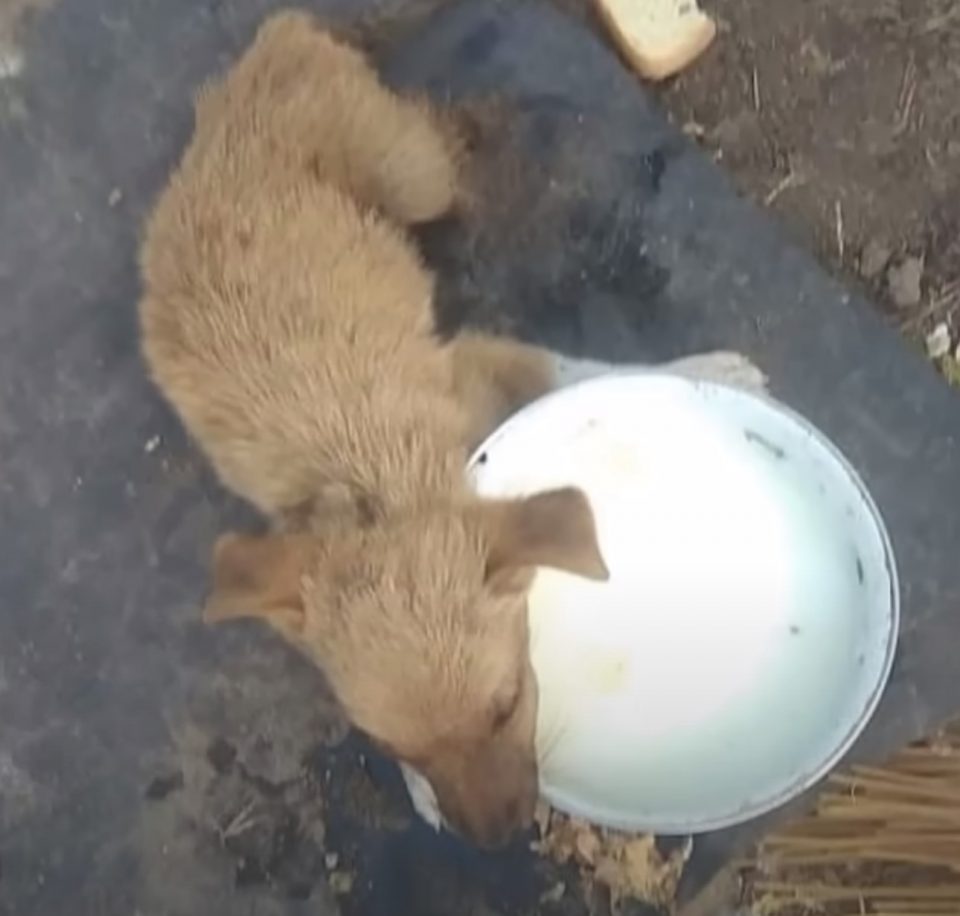
Betty was swiftly taken to the hospital, where she received a thorough checkup as well as X-rays in order to really determine what state her paws were in.
While they waited for the results, they were constantly massaging ger back legs in order to restore circulation. They also sewed up her abdomen, which was torn.
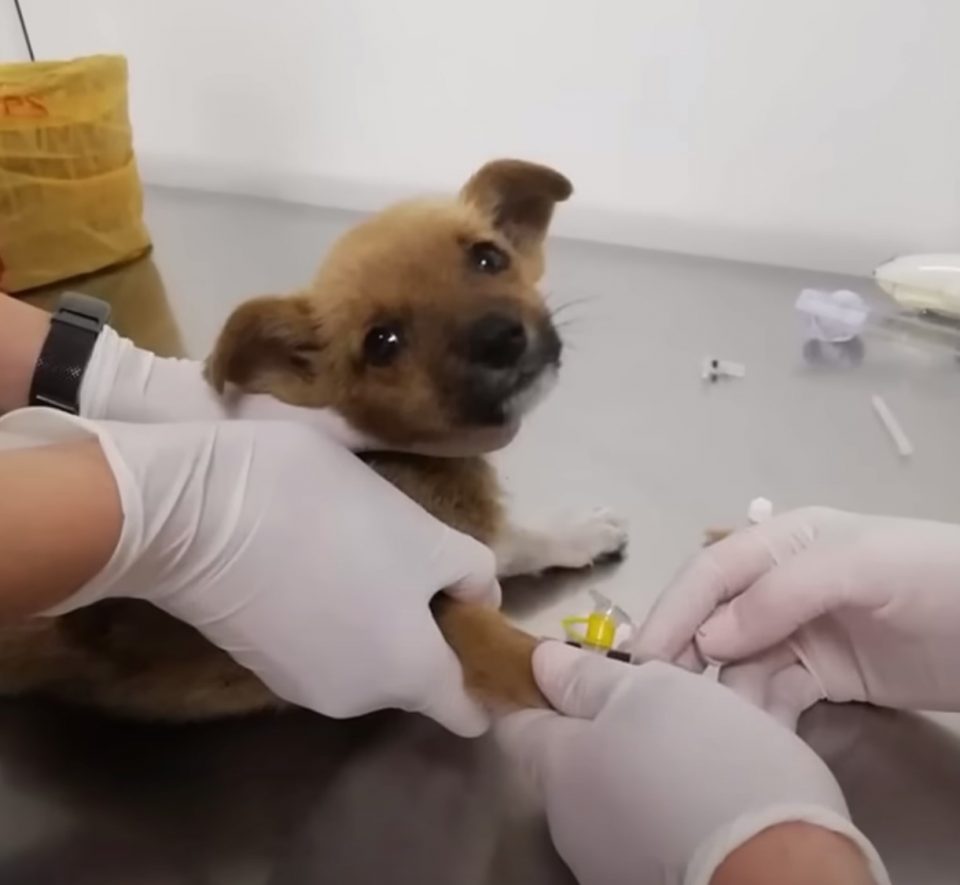
Unfortunately, as soon as the doctors saw her scans, they immediately knew that one of her paws had to be amputated.
They prepared this brave girl for surgery, which ended up being a success.
Three days later, since she was finally able to eat solid foods, the staff prepared her a very yummy meal – a treat for being such a good girl.
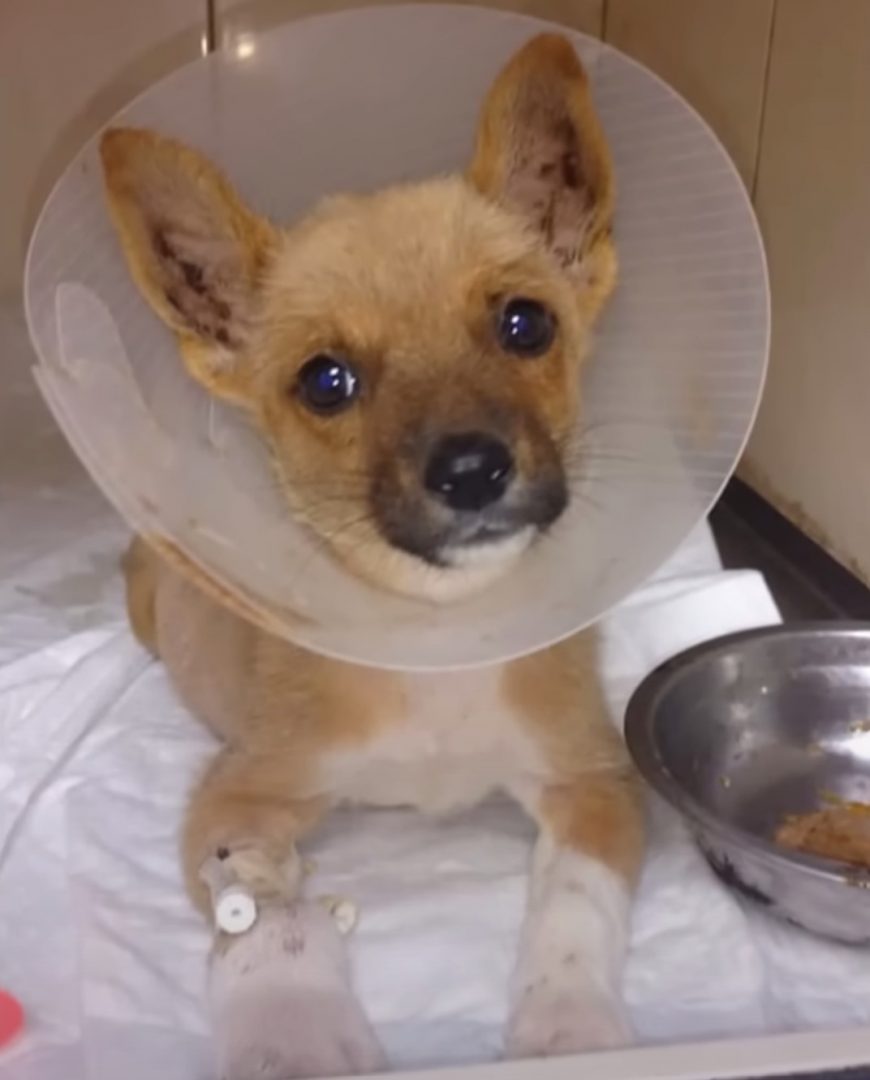
Betty spent some time recovering at the vet, where 15 days after her surgery, she was able to take her first steps.
Even though she was a little shy, this incredibly brave girl was doing great!
To her rescuers, this was a clear sign that she was ready to be adopted.
New Life
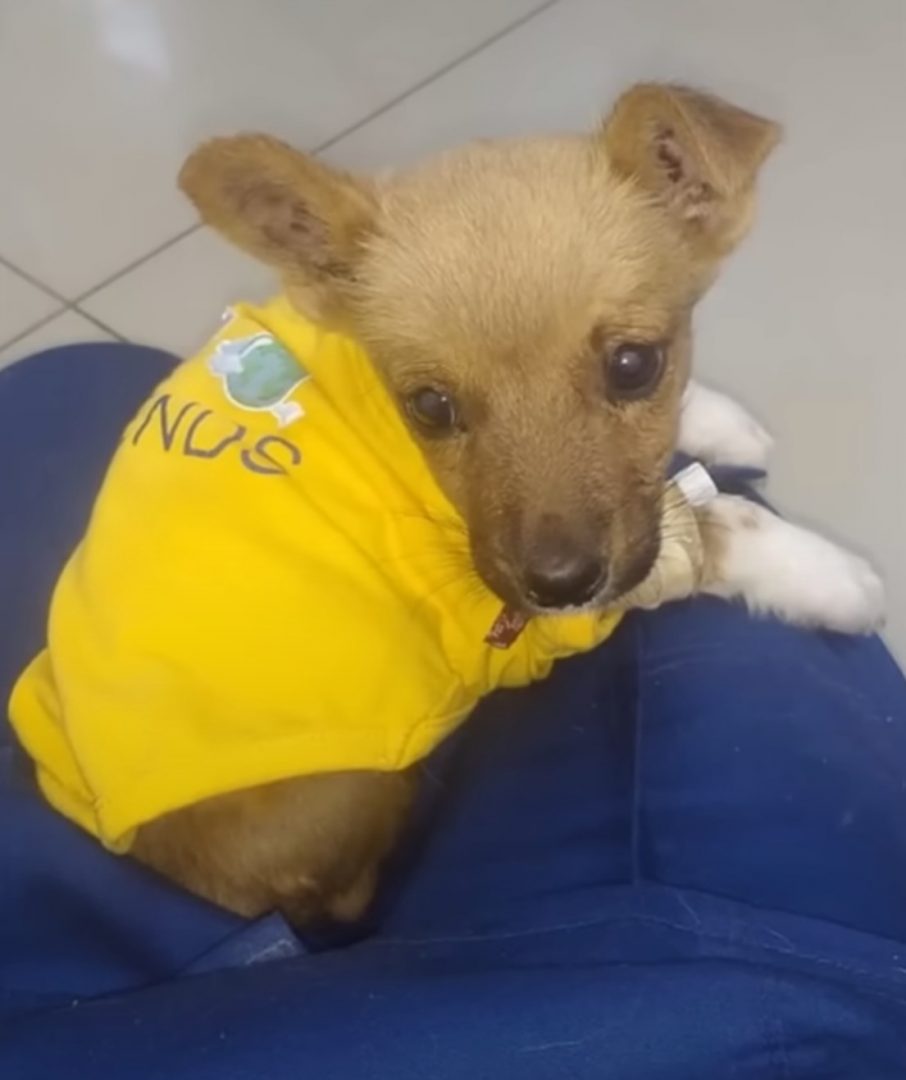
Being so adorable, it didn’t take too long for Betty to find a forever home.
She was adopted by a loving woman who was more than happy to show this special girl just how good life can be.
As soon as the two met, they weren’t able to stop hugging each other!
Betty is now part of the best family ever, and after only a month, she grew up into the happiest pup ever.
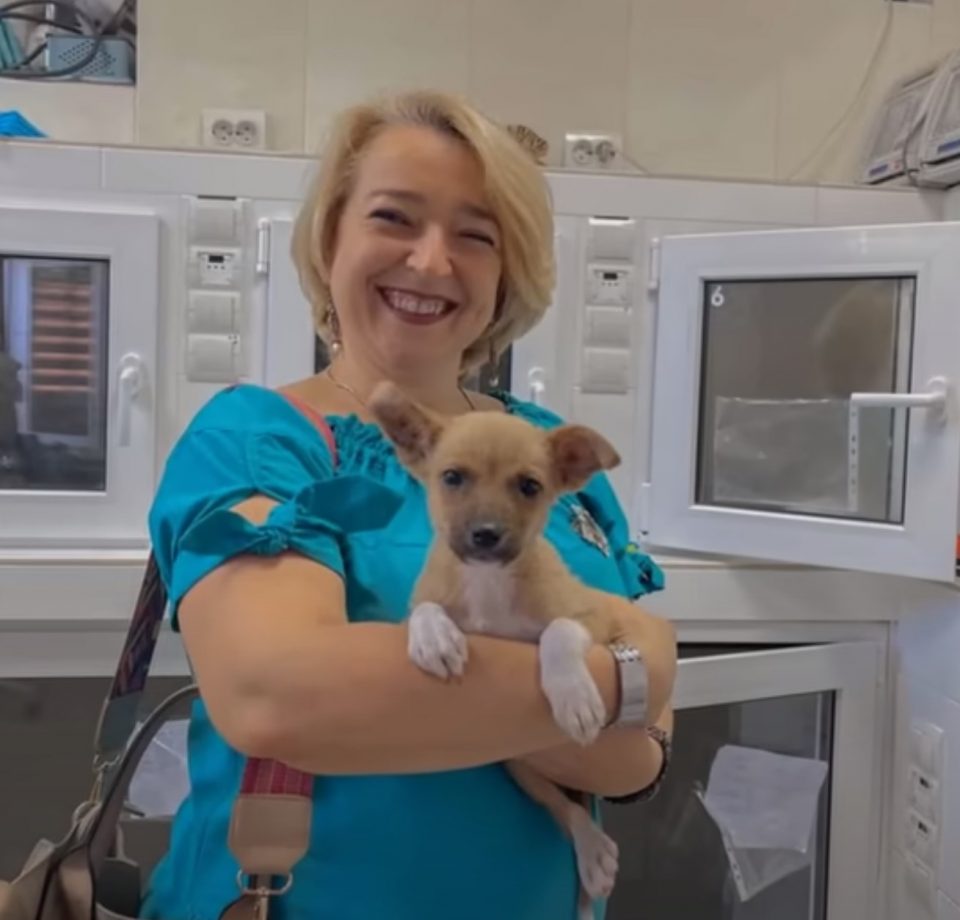
She completely forgot about her past life and even about her disability, as she doesn’t let anything stop her from having fun with her new furry older brother.
Betty is living the life of any pup’s dream!
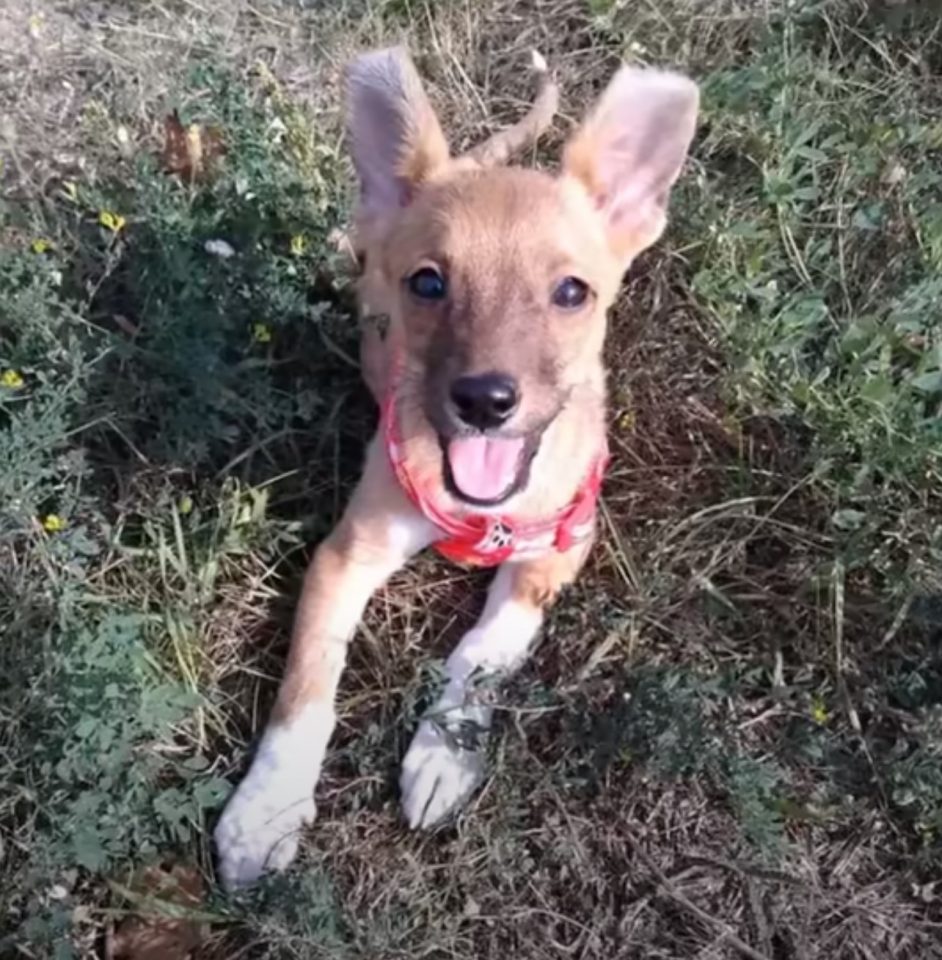
Final Word
It is important to remember that all of this was possible only because of the efforts of incredible hoomans.
If it wasn’t for them, who knows what would have happened to this poor pup?
And, she isn’t the only one.
All around the world, there are thousands of amazing hoomans and shelters who dedicate their time and energy to providing animals in need with the help they need. And, they can always use some additional help.
So, if you or anybody you know is willing to change a pup’s life forever and can offer a helping hand, head down to your local shelter and volunteer.
I promise you, the feeling of helping an animal is truly indescribable.
If you’ve ever dreamed of having a furry companion without the hassle of constant shedding, you’re in luck. Today, we’re going to talk about a special group of dogs that won’t leave your home covered in fur. Imagine coming home to a clean couch and saying goodbye to endless vacuuming sessions – that’s the promise of these low-shedding pups.
Picture this: a dog that’s not only adorable and loving but also keeps your space hair-free. Whether you have allergies or simply prefer a tidy living environment, these non-shedding breeds might be the perfect fit for you. Stay tuned to discover which dog breeds could be your new shedding-free best friend.
Understanding Dog Breeds
When it comes to finding a furry companion that doesn’t shed much, understanding different dog breeds is key. Here are some popular low-shedding breeds that could be perfect for your home:
Poodle
Poodles are known for their hypoallergenic coats, making them a great choice for allergy sufferers. Their curly fur doesn’t shed much and requires regular grooming to prevent matting.
Bichon Frise
These small, cheerful dogs have a tight curly coat that hardly sheds. Regular grooming is necessary to keep their coat free of tangles and mats.
Shih Tzu
Shih Tzus have a long, flowing coat that doesn’t shed excessively. Their luxurious fur does require regular brushing to prevent tangling and maintain its beauty.
Maltese
These gentle dogs have a silky, white coat that sheds very little. Regular grooming is essential to keep their coat clean and free of knots.
Yorkshire Terrier
Yorkies have a beautiful, silky coat that sheds minimally. Their long hair requires frequent brushing and grooming to prevent tangles and mats.
By understanding the characteristics of different dog breeds that don’t shed much, you can choose the perfect companion that suits your lifestyle and keeps your home fur-free.
Low-Maintenance Coat Care
When you welcome a low-shedding dog into your home, you not only enjoy a cleaner living space but also benefit from reduced grooming needs. Let’s explore some easy coat care tips for these non-shedding breeds to keep your furry companion looking and feeling their best.
- Routine Brushing: Regular brushing is essential to prevent matting and tangling in your dog’s coat. Depending on the breed, weekly or biweekly brushing sessions can help remove loose fur and distribute skin oils for a healthy shine.
- Professional Grooming: While low-shedding breeds may not leave much hair around your home, they still benefit from professional grooming sessions. A groomer can trim their coat, clip their nails, and ensure their overall well-being.
- Bathing Schedule: Unlike shedding breeds, non-shedding dogs often require less frequent baths. Consult your vet or groomer to determine the ideal bathing schedule based on your dog’s breed and coat type to avoid skin issues.
- Maintaining Ear Hygiene: Dogs with non-shedding coats, especially those with long or floppy ears, are prone to ear infections. Regularly check and clean your dog’s ears to prevent buildup of dirt and moisture.
- Dental Care: Dental hygiene is crucial for your furry friend’s overall health. Brush your dog’s teeth regularly, provide dental treats, or use dental toys to keep their teeth clean and prevent dental problems.
By following these simple and effective coat care tips, you can ensure that your low-shedding dog stays healthy, happy, and looking their best.
Popular Hypoallergenic Breeds
When choosing a dog breed that doesn’t shed much, there are several popular hypoallergenic options to consider:
1. Poodle
Known for its intelligence and non-shedding coat, Poodles come in different sizes, making them suitable for various living spaces. Whether Miniature, Toy, or Standard, Poodles require regular grooming to maintain their curly, hypoallergenic coat.
2. Bichon Frise
These charming dogs have a curly coat that sheds minimally. Their friendly and affectionate nature, combined with their hypoallergenic qualities, makes them great companions for families and individuals looking for low-shedding pets.
3. Shih Tzu
With a luxurious coat that resembles human hair, Shih Tzus are a popular choice for those seeking a hypoallergenic companion. Regular grooming, including brushing and occasional trims, helps keep their coat in top condition while minimizing shedding.
4. Maltese
Maltese dogs are not only hypoallergenic but also have a long, silky white coat that’s both beautiful and low-shedding. These small dogs are known for their playful demeanor and make excellent indoor pets for households with allergy concerns.
5. Yorkshire Terrier
Yorkies are small hypoallergenic dogs with a unique coat that is fine, silky, and doesn’t shed much. Their size and minimal shedding make them a popular choice for apartment dwellers and individuals looking for a low-maintenance pet that’s big on personality.
By considering these popular hypoallergenic breeds, you can choose a dog that fits your lifestyle while minimizing the impact of shedding on your home and allergies.
Lifestyle with Non-Shedding Dogs
When you choose a non-shedding dog like a Poodle, Bichon Frise, Shih Tzu, Maltese, or Yorkshire Terrier, your lifestyle gets a pet that requires lower maintenance in managing loose fur around your home. These breeds shed minimally, which means less time spent cleaning up after them.
Non-shedding dogs are great companions for individuals with allergies or those who prefer a cleaner living environment without excessive pet fur. Their hypoallergenic qualities make them suitable for various living spaces, including apartments and smaller homes.
To maintain your non-shedding dog’s coat and prevent matting, regular grooming is essential. Brushing your pet a few times a week helps to remove loose fur and prevent tangles, keeping their coat healthy and shiny.
With non-shedding breeds, you can enjoy spending quality time with your furry friend without the constant worry of shedding. These dogs offer companionship and love while minimizing the typical concerns associated with pet hair in your home.
Consider incorporating a grooming routine into your lifestyle to ensure your non-shedding dog stays healthy and happy. By dedicating time to care for your pet’s coat, you can reap the benefits of having a low-shedding, hypoallergenic companion that enhances your daily life.
Conclusion
That’s the lowdown on dogs that don’t shed! Owning a low-shedding pup like a Poodle, Bichon Frise, Shih Tzu, Maltese, or Yorkshire Terrier can bring you joy without the hassle of constant fur cleanup. These hypoallergenic breeds offer companionship and a cleaner living space, perfect for allergy sufferers or those who prefer a tidy home. Remember, regular grooming is key to keeping your non-shedding dog’s coat healthy and shiny. So, if you’re looking for a furry friend that won’t leave a trail of hair behind, consider one of these breeds and enjoy a shed-free life with your new companion!
Frequently Asked Questions
Which dog breeds are considered low-shedding and hypoallergenic?
Low-shedding and hypoallergenic dog breeds include Poodles, Bichon Frises, Shih Tzus, Maltese, and Yorkshire Terriers.
Why is routine brushing and grooming essential for these low-shedding breeds?
Routine brushing and grooming help maintain the hypoallergenic coats of these breeds, prevent matting, and ensure their health and shine.
Are these low-shedding dogs suitable for individuals with allergies?
Yes, these breeds are recommended for individuals with allergies due to their non-shedding qualities, making them less likely to trigger allergic reactions.
How can owning a non-shedding dog enhance one’s lifestyle?
Owning a non-shedding dog can reduce time spent cleaning up fur, making them ideal companions for those seeking a cleaner living environment or with allergy concerns.
What is emphasized to ensure the health and happiness of these low-shedding, hypoallergenic dogs?
Regular grooming is essential to prevent matting and maintain the health and shine of these non-shedding breeds’ coats, allowing owners to enjoy quality time with them.
[no_toc]

Hey there, I’m Janet Brooks, a dog-loving student from California. I’m all about helping pups in need, especially those without homes. Me and my awesome friends work together to give shelter and love to stray dogs. Oh, and I also write blogs about dogs to share helpful info.